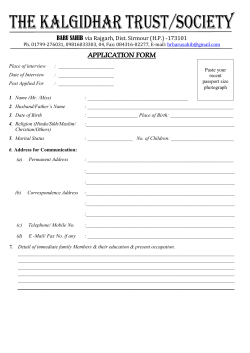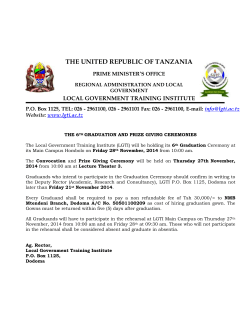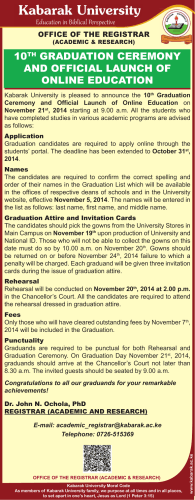
Graduation Initiative 2025 - The California State University
The California State University (CSU) drives California’s economy with 100,000 students earning high quality degrees each year. The CSU is the largest provider of baccalaureate degrees in California. The university’s ability to improve graduation rates is critical to meeting the state’s future workforce demands. The CSU’s systemwide Graduation Initiative was launched in 2009 to increase graduation rates for all students. Now in its sixth and final year, the goal of the initiative was to raise the CSU’s overall six‐year graduation rates for first‐time freshmen by eight percentage points by 2015 – from 46 percent to approximately 54 percent – bringing the CSU into the top quartile of national averages of similar institutions. While data will not be finalized until after the upcoming 2015 commencement, the CSU is on target to reach this critical goal, further benefitting the world’s seventh largest economy. Graduation Initiative 2025 Based on current completion rates coupled with “Graduation Initiative 2025” endeavors, the university estimates our students will earn one million degrees between now and 2025. “Graduation Initiative 2025” endeavors are expected to boost degrees earned by 100,000 CSU graduates over the next decade relative to current graduation rates. The system’s degree completion goals are: Increasing the six‐year graduation rate for first‐ time freshmen to 60 percent Increasing the four‐year graduation rate for first‐time freshmen to 24 percent Increasing the four‐year graduation rate for transfer students to 76 percent Increasing the two‐year graduation rate for transfer students to 35 percent Closing the achievement gap for historically underrepresented students to seven percent Closing the achievement gap for low‐income students to five percent The target graduation date for the initiative is aligned with a report issued by the Public Policy Institute of California which declared that by 2025 the supply of college educated workers needed to maintain the growth of the California’s economy will fall short of projected demand by one million based on current trends. These completion rate “stretch” targets apply to students who are currently in the 8th grade. The “stretch” targets estimates are based on baseline data, historical data, and graduation rates of peer institutions as defined by the Education Trust’s Results Online data tool. Winning Strategies Here are some of the strategies the Chancellor’s Office and campuses are employing to reach the “stretch” degree completion targets: Reducing the number of units required to earn a BA/BS degree while maintaining quality. Ninety‐four (94) percent of BA/BS programs now require only 120 units. Expanding high impact practices including undergraduate research, service learning, internships and study abroad which foster student engagement, lead to greater student success and persistence rates. Redesigning courses to incorporate technology to improve content retention, especially in the courses with historically high failure rates. Expanding the Associate Degree for Transfer program to ensure that transfer students enter the university better academically prepared and ready to complete the remaining 60 credits needed to fulfill degree requirements. Expanding cohort‐based learning communities that create additional engagement among first‐ time freshmen and support persistence to degree. Expanding Summer Bridge and other transitional programs to foster success among first‐time freshmen. Expanding the use of electronic academic advising tools to establish clear pathways to degrees and data analysis to improve student outcomes. Hiring more tenure track faculty and academic advisors to support student success. Expanding the number of CourseMatch course offerings to increase degree completion rates. CourseMatch is an online concurrent enrollment program that provides full‐time students enrolled at any campus with access to fully online courses offered at other CSU campuses. Building relationships with community and business partners, community colleges and K‐12 school districts to ensure first‐time freshmen are prepared for college. CSU Students are Unique More than half of CSU students are students of color One‐third of CSU undergraduates are the first in their families to attend college 49 percent of undergraduates are Pell recipients (need‐based grants for low‐income undergraduates) Three out of four students work more than 20 hours per week More than 24,000 first‐time freshmen enrolled at CSU campuses in 2013 required developmental coursework for success in college level math and English
© Copyright 2025











